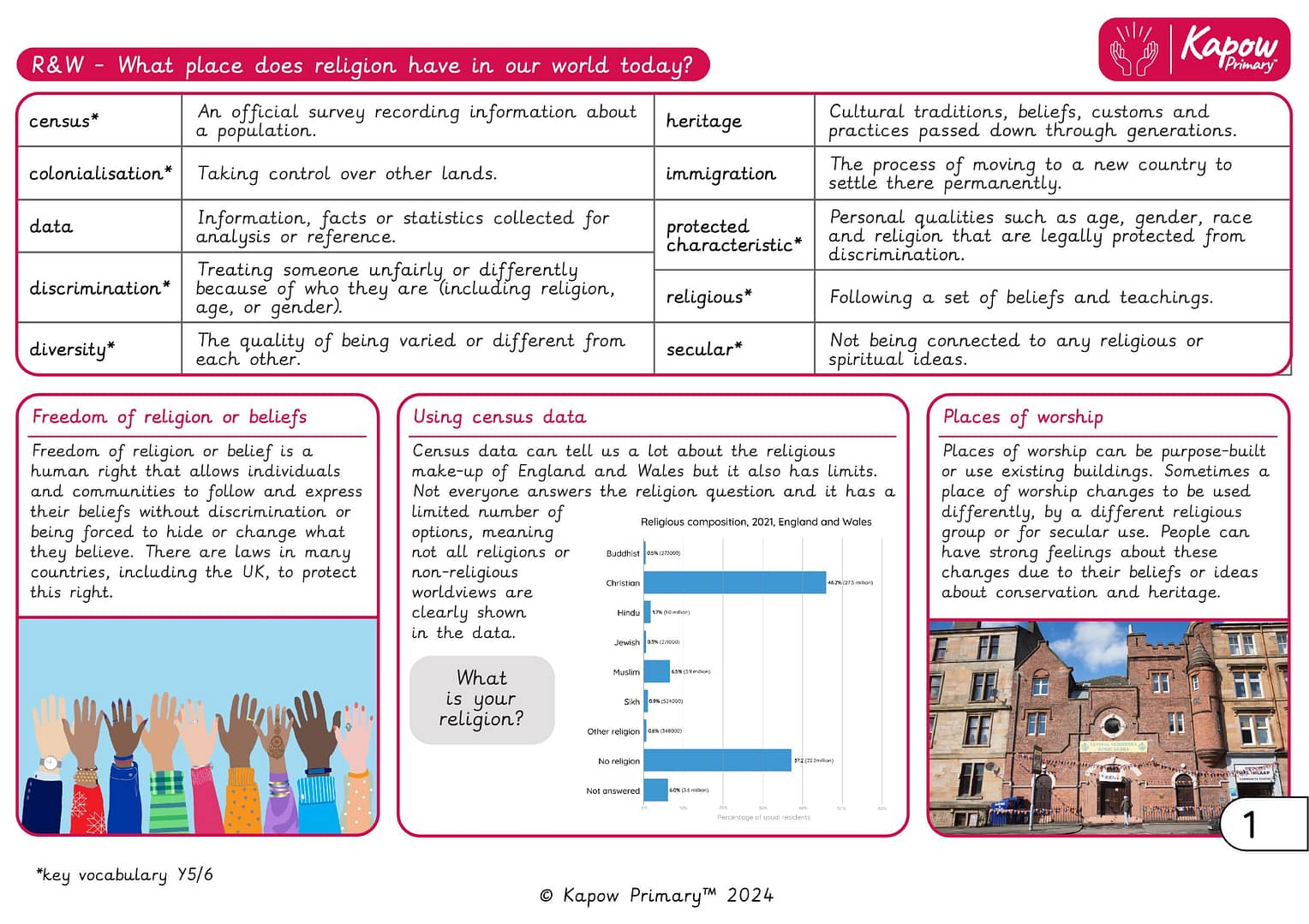
A Knowledge Organiser that captures the essential knowledge and skills learnt throughout the mixed-age unit Religion and worldviews, Year 5/6 (A), What place does religion have in our world today?
This resource is designed to help pupils explore the presence and role of religion in today’s world through the lens of diversity, heritage and human rights. It introduces key vocabulary such as census, discrimination, protected characteristic and secular, while prompting critical thinking about freedom of belief and the changing use of places of worship. With the help of visual aids like a religion composition chart and a world map showing the spread of major religions, pupils investigate how beliefs have been shaped by migration, colonisation and global communication. This Knowledge Organiser supports respectful, informed discussion and builds an understanding of religious and cultural identity in contemporary society.
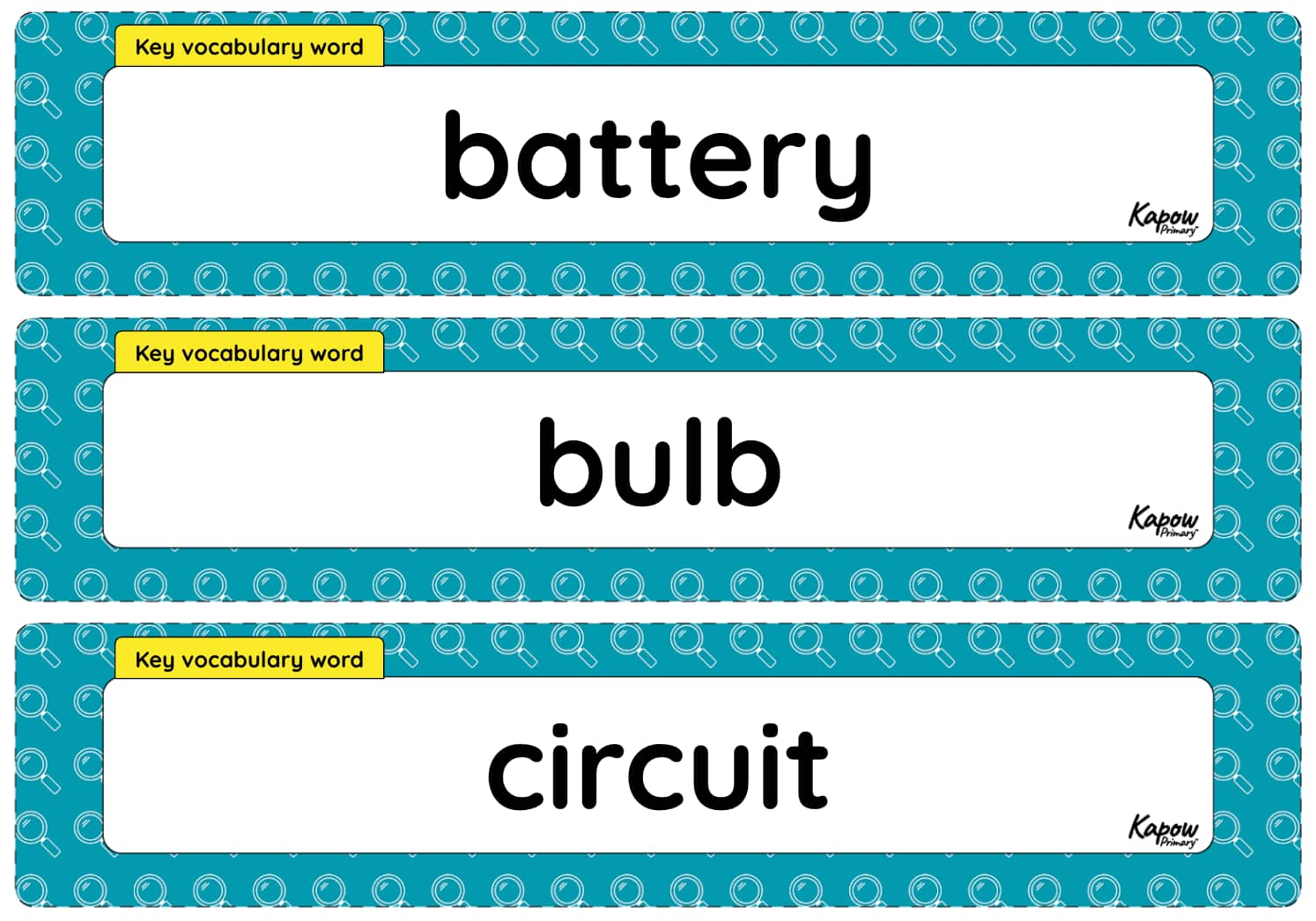
This unit vocabulary display includes keywords from the mixed-age unit Science, Y3/4 (A), Making connections: How does food affect muscle fatigue? and additional unit-specific words that may be helpful in a display.
Key vocabulary is clearly labelled on the display, highlighting essential words that the pupils are expected to retain and reuse in future units. Understanding these words enhances comprehension of the subject and supports understanding of key scientific concepts and processes.
See the full Science: Progression of key vocabulary.
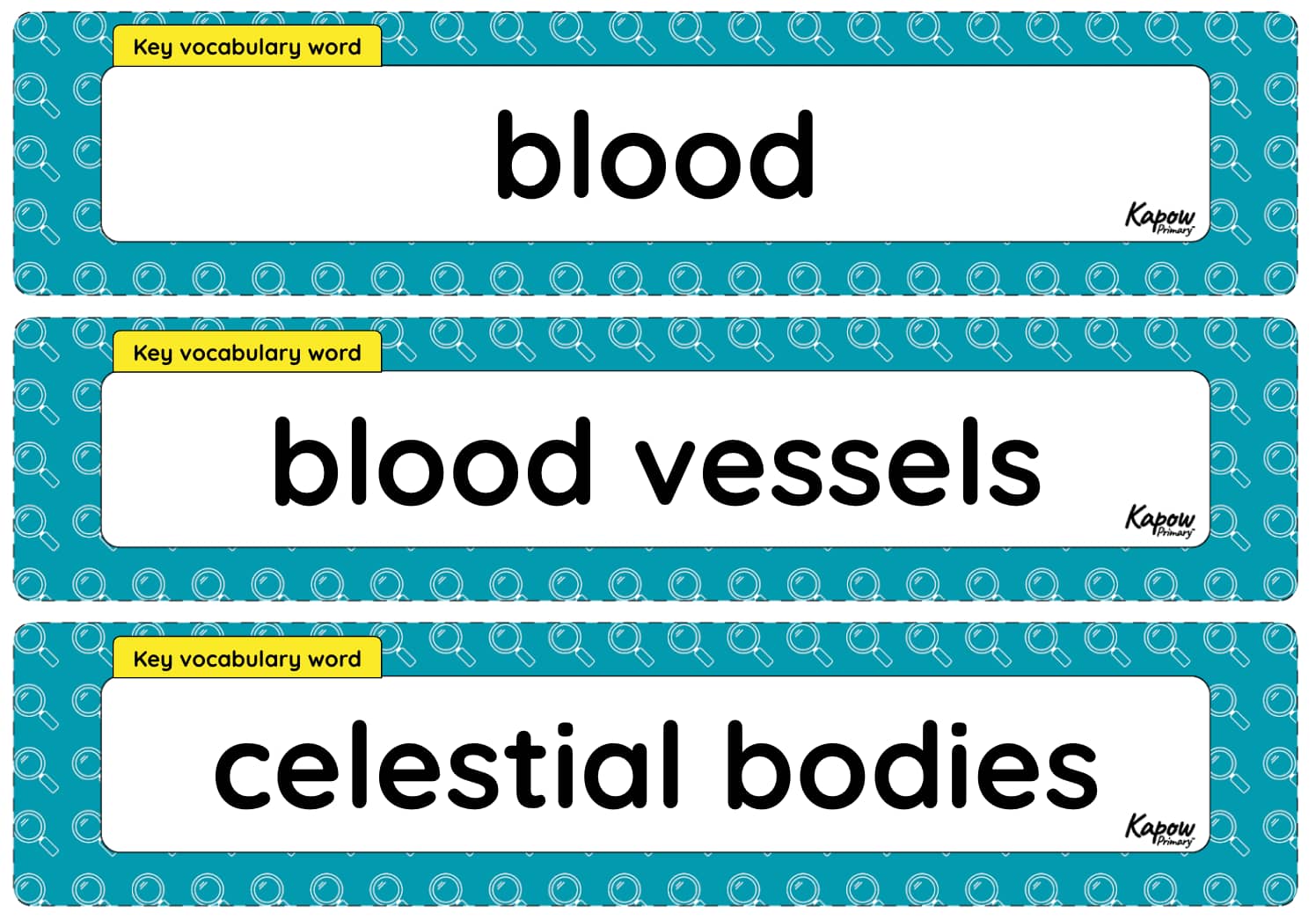
This unit vocabulary display includes keywords from the mixed-age unit Science, Y5/6 (A), Making connections: How reflective are space blankets? and additional unit-specific words that may be helpful in a display.
Key vocabulary is clearly labelled on the display, highlighting essential words that the pupils are expected to retain and reuse in future units. Understanding these words enhances comprehension of the subject and supports understanding of key scientific concepts and processes.
See the full Science: Progression of key vocabulary.
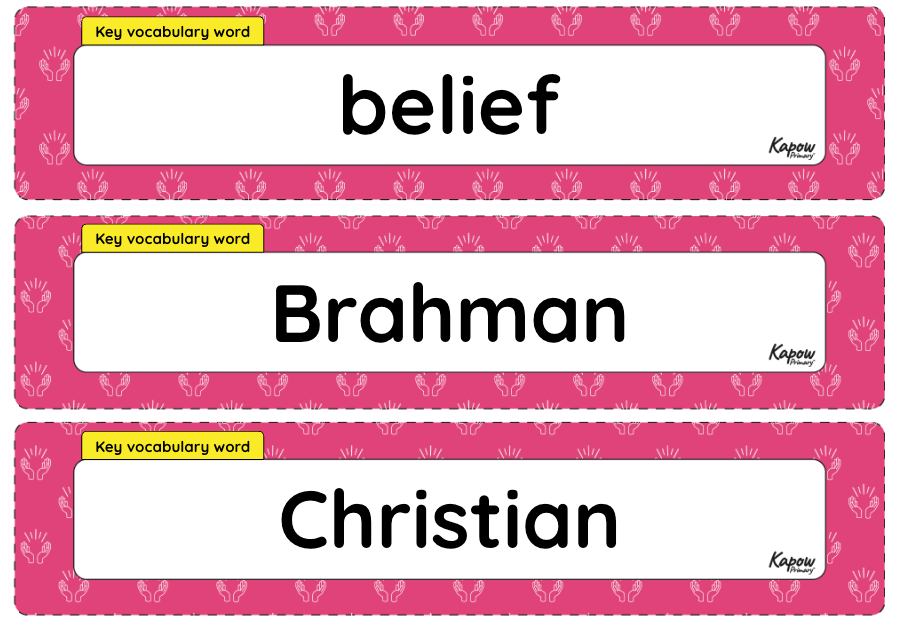
This unit vocabulary display includes keywords from the mixed-age unit Religion and worldviews, Y1/2 (A), Why should we care for the world? and additional unit-specific words that may be helpful in a display.
Key vocabulary is clearly labelled on the display, highlighting essential words that the pupils are expected to retain and reuse in future units. Understanding these words enhances comprehension of the subject and supports understanding of prominent organised worldviews.
See the full Religion and worldviews: Progression of key vocabulary.
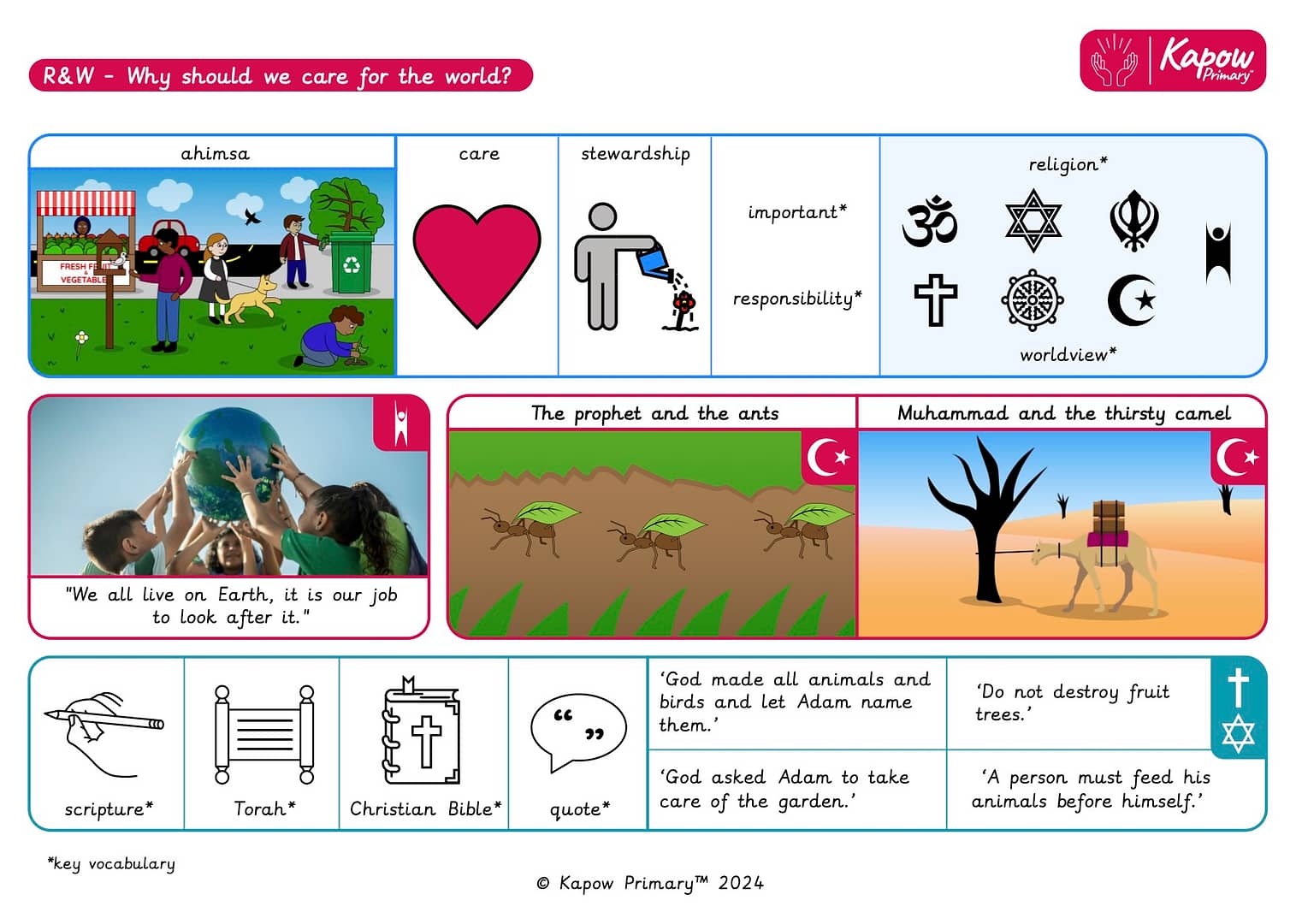
A Knowledge organiser that captures the essential knowledge and skills learnt throughout the mixed-age unit Religion and worldviews, Year 1/2 (A), Why should we care for the world?
This resource is designed to help pupils explore the importance of caring for the Earth through religious teachings and moral responsibilities. It introduces key concepts such as ahimsa, stewardship, and responsibility, with references to stories and quotes from religious texts including the Torah and the Christian Bible. Pupils learn about the symbolic role of humans as caretakers, inspired by teachings like Adam being asked to care for the garden, and Muhammad’s compassion towards animals. Through visual prompts and simplified scripture, this resource supports the development of moral reasoning and cross-religious understanding of environmental care.

A Knowledge organiser that captures the essential knowledge and skills learnt throughout the mixed-age unit Religion and worldviews, Year 5/6 (A), What happens when we die? (Part 1).
This resource is designed to support pupils in understanding diverse perspectives on death and the afterlife across different religious and non-religious worldviews. It introduces key concepts such as the soul, atonement, reconciliation, and beliefs about the afterlife in Christianity, Islam, Judaism and Humanism. Terms like Jannah, Olam Ha-Ba, Gehinnom, and purgatory are explained, alongside traditions such as Yom Kippur and Dia de los Muertos. The organiser explores how people honour the dead, seek forgiveness, and find comfort through rituals and beliefs, highlighting how views on death are shaped by culture, faith, and personal interpretation. It is ideal for promoting reflection and respectful dialogue about life, death, and legacy.
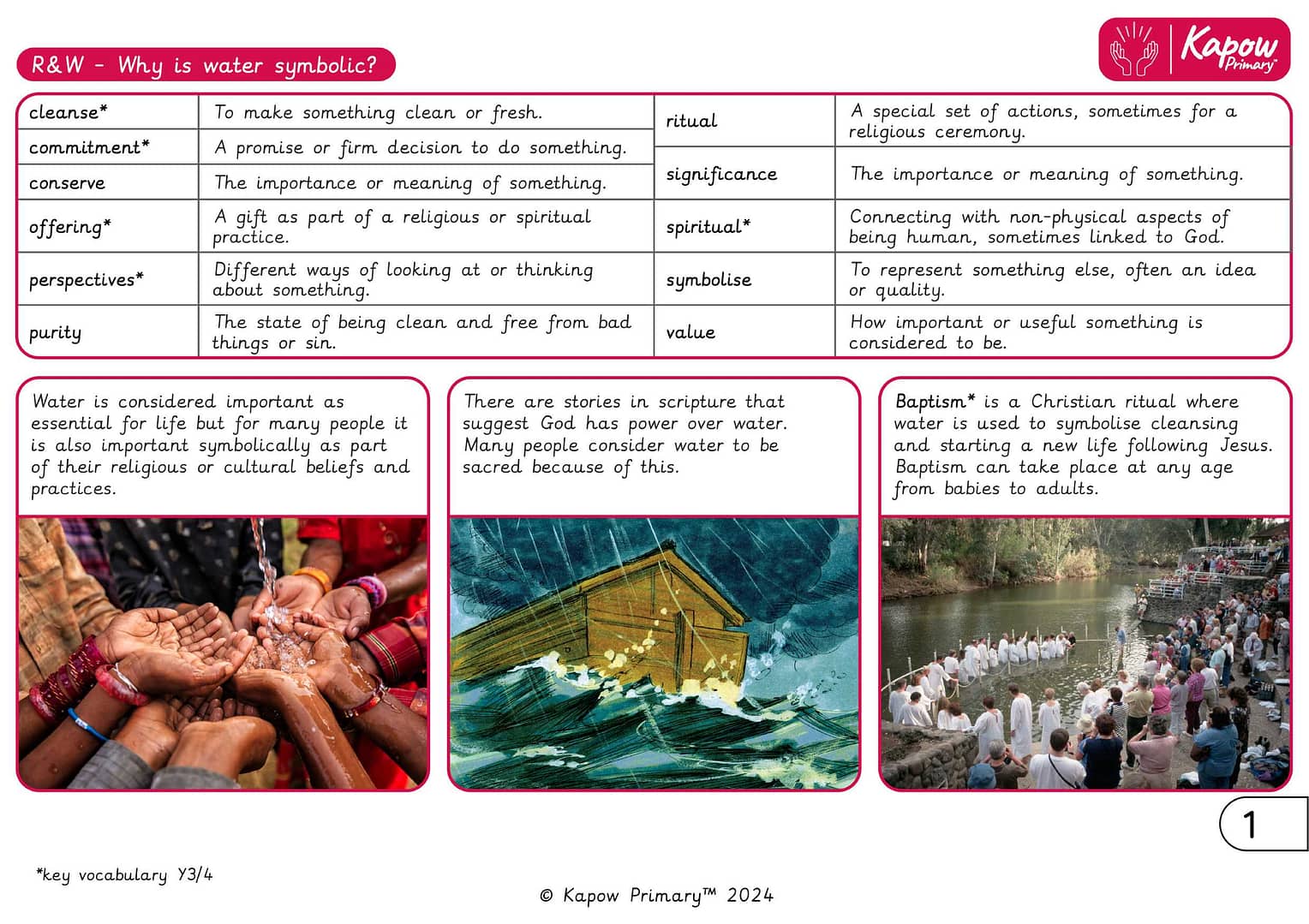
A Knowledge organiser that captures the essential knowledge and skills learnt throughout the mixed-age unit Religion and worldviews, Y3/4 (A), Why is water symbolic?.
This resource is designed to support children as they explore the symbolic significance of water in various religious and cultural practices. It highlights key vocabulary, rituals and beliefs, such as Christian baptism, Hindu sacred bathing and the spiritual importance of water in Buddhism and Shintoism. It is perfect for consolidating essential knowledge and fostering cross-cultural understanding
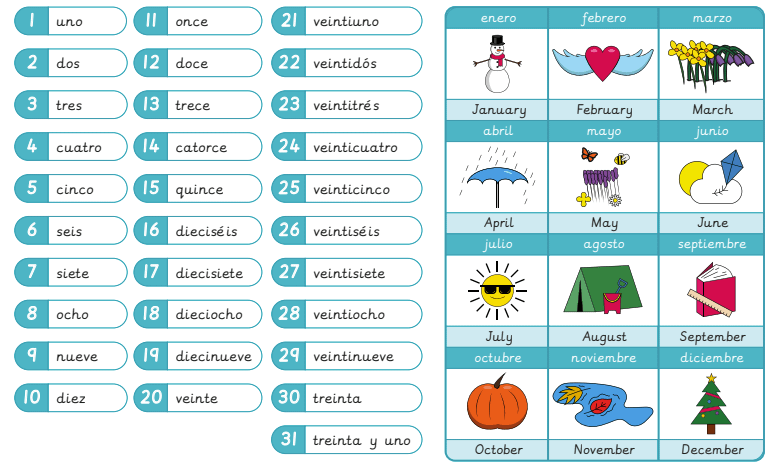
A Knowledge organiser that captures the essential knowledge and skills learnt throughout the mixed-age unit Spanish, Y3/4 (A), Unit 5: Dates and birthdays.
This resource is designed to support pupils as they learn to recognise, say, and write numbers up to 31 in Spanish and apply them in the context of calendar dates and birthdays. It introduces vocabulary for months of the year, ordinal number forms, and how to construct sentences for stating the date and asking or answering questions about birthdays. Illustrated with engaging visuals and bilingual prompts, the resource reinforces essential grammar and cultural conventions—such as lowercase months—and is ideal for consolidating vocabulary and sentence structure around personal information.









